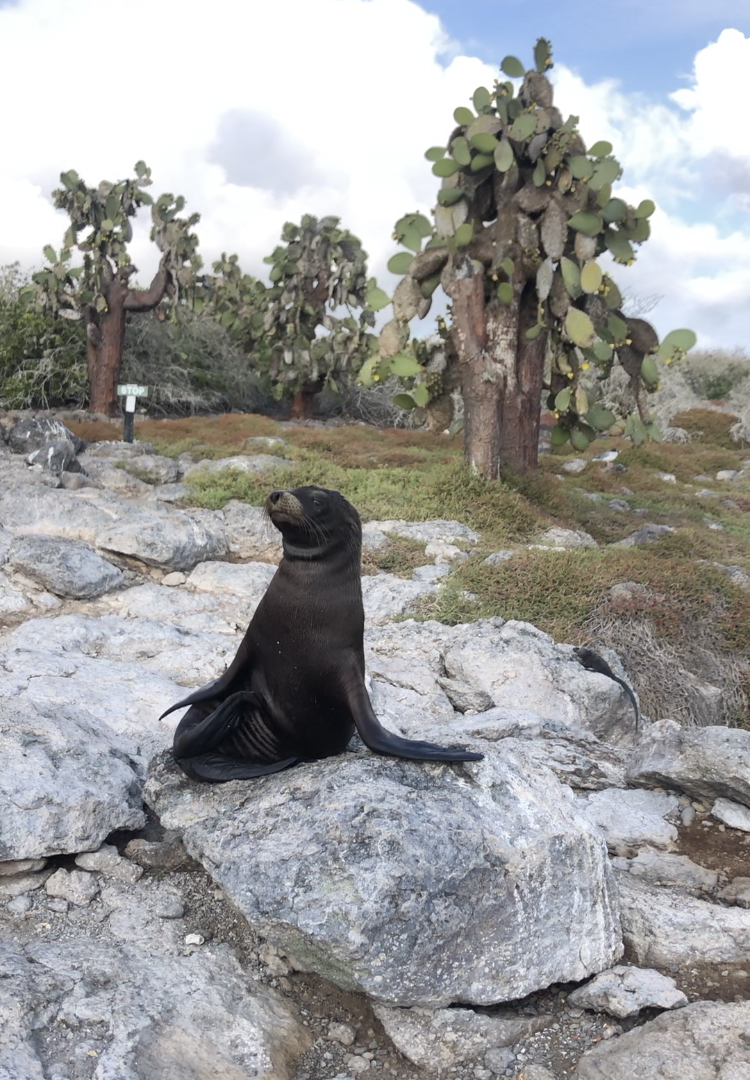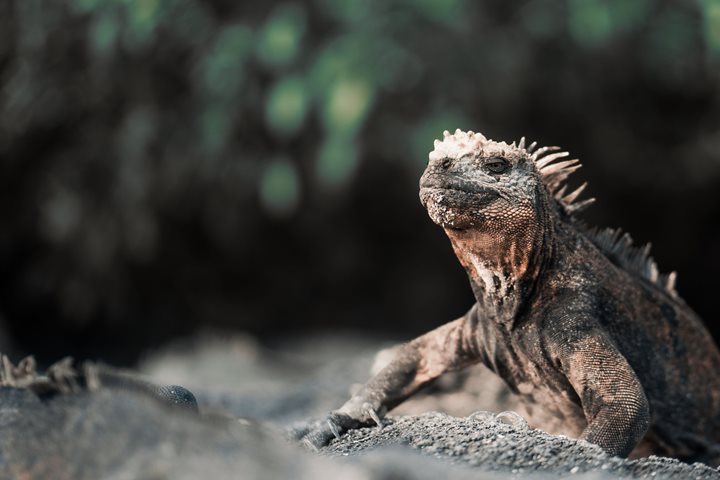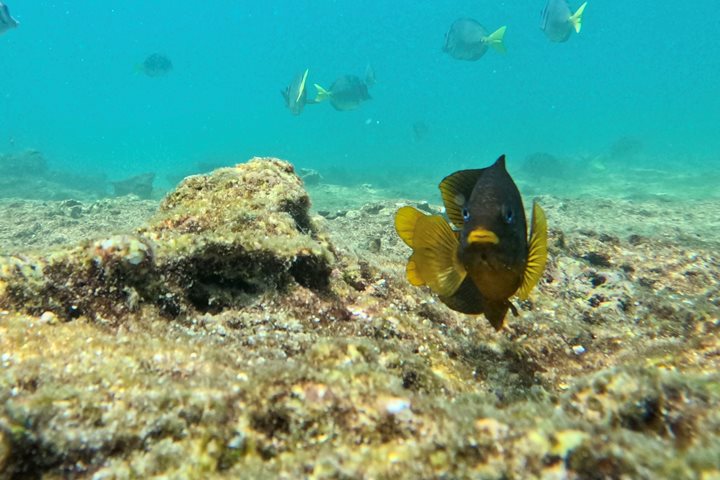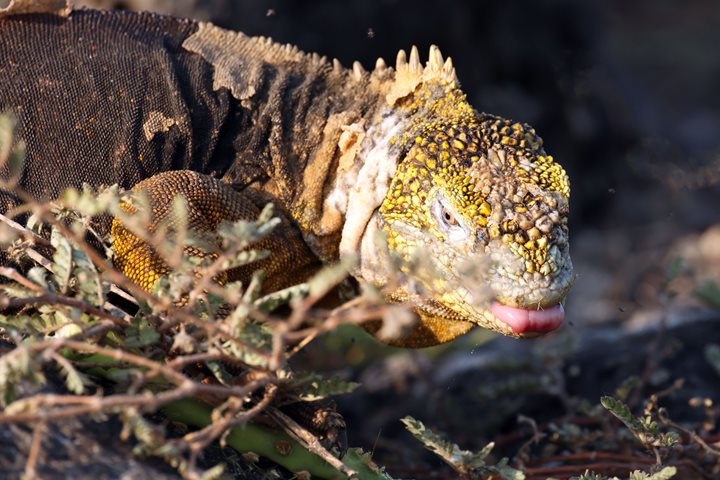Our exploration of the Galapagos islands has led us to Plazas Islet today. We had the opportunity to see our first conolophis cristatus land Iguanasm, and they were all over the place eating opuntia cactus! Others were seen fighting for a bite. Later in the afternoon we visited Santa Fe Island for some kayaking in the beautiful bay surrounded by marine turtles and rays. We then hiked along a trail and spotted our second species of land iguana, the conolophus palidus.
Back on board the activities continued with recaps, and naturalist shared new information about the Galapagos Islands. There is a lot to learn aboard National Geographic Islander!









